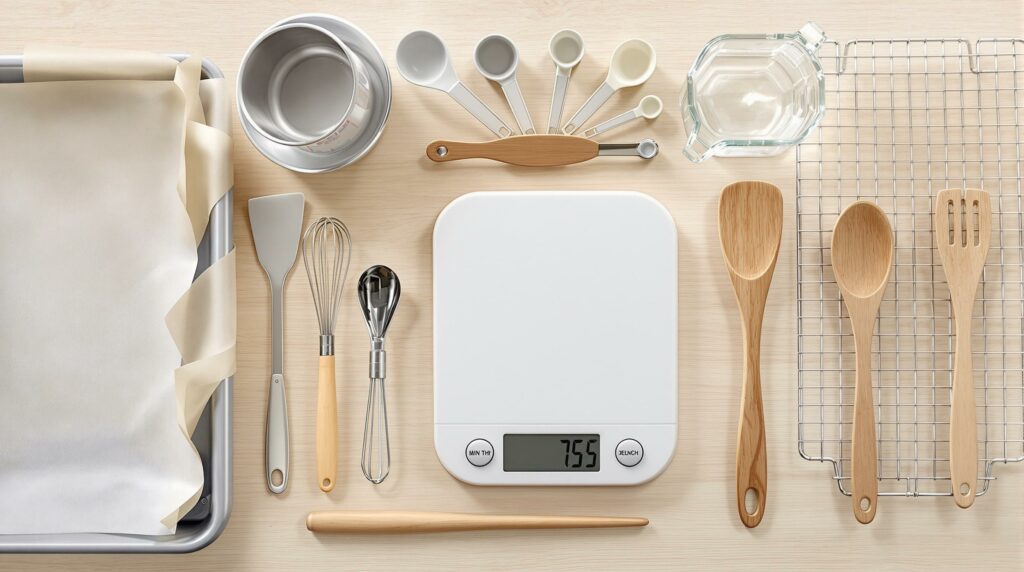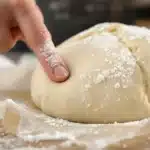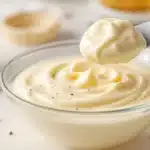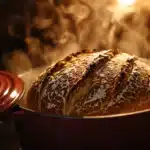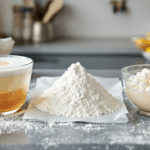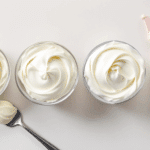So, you’ve caught the baking bug! You’re dreaming of flaky croissants, perfectly chewy cookies, crusty artisan bread, or sky-high layer cakes. The inspiration is bubbling, but then comes the practical question: what gear do you actually need to get started? Walking into a kitchen supply store or Browse online baking retailers can be incredibly overwhelming. Whisks of every size, pans in countless shapes, mysterious gadgets promising perfect results – the sheer volume of equipment is enough to make any beginner’s head spin. Do you really need that expensive stand mixer right away? Is a fancy Bundt pan essential? What are the absolute basics versus the tools that can wait?
Starting your baking journey shouldn’t require breaking the bank or cluttering your kitchen with unnecessary items. Building your toolkit strategically is key. This guide will help you navigate the world of baking equipment, clearly distinguishing between the foundational Must-Haves – the non-negotiable tools required for accurate measuring, basic mixing, and successful baking – and the Nice-to-Haves, items that can make tasks easier, expand your repertoire, or improve specific results, but can be acquired gradually as your skills and interests evolve. Let’s equip your kitchen smartly!
The Foundation: Absolutely Essential Baking Gear
These are the core items you’ll need to tackle a wide range of basic baking recipes accurately and effectively. Focus on acquiring these first.
Measuring Tools (Accuracy is Non-Negotiable!)
As we’ve emphasized before (especially in avoiding Blunder #1!), baking relies on precision. Inaccurate measurements are a primary cause of baking failures.
- Digital Kitchen Scale: If there’s one “splurge” to make early on, this is it. It is THE most important tool for baking accuracy, especially for flour. Measuring by weight (grams or ounces) eliminates the significant inconsistencies of volume cups. It guarantees you’re using the exact amounts specified in reliable recipes, leading to far more consistent results. Status: MUST-HAVE.
- Liquid Measuring Cups: A clear glass or plastic cup with graduated markings on the side and a spout for pouring. Essential for accurately measuring water, milk, oil, honey, etc. Look for one with clear, easy-to-read markings (1-cup and 2-cup sizes are most common). Status: MUST-HAVE.
- Dry Measuring Cups: A nested set of standard sizes (typically 1/4 cup, 1/3 cup, 1/2 cup, 1 cup). If you aren’t weighing all your dry ingredients, these are essential. Even if you primarily weigh flour and sugar, they are still useful for measuring things like chocolate chips, nuts, or oats by volume when recipes call for it. Remember the “spoon and level” method for flour if using these! Status: MUST-HAVE (especially if not weighing everything).
- Measuring Spoons: A standard set including 1/4 teaspoon, 1/2 teaspoon, 1 teaspoon, and 1 tablespoon. Absolutely essential for accurately measuring small quantities of powerful ingredients like salt, baking soda, baking powder, yeast, and extracts. Look for sturdy metal ones with clear markings. Status: MUST-HAVE.
Mixing & Prep Tools
You need reliable tools to combine your accurately measured ingredients.
- Mixing Bowls: A set of at least three nesting bowls in various sizes (small, medium, large) is crucial. Choose sturdy materials like stainless steel (lightweight, durable, non-reactive), glass (non-reactive, microwave-safe often), or ceramic. Having multiple bowls allows you to separate wet and dry ingredients easily. Status: MUST-HAVE.
- Whisk: At least one sturdy balloon whisk (with thin, flexible wires) is essential for incorporating air (whipping eggs/cream), thoroughly combining dry ingredients (aerating and distributing leaveners), and smoothing out lumps in thin batters or sauces. Status: MUST-HAVE.
- Rubber or Silicone Spatula(s): Indispensable for gently folding ingredients (like egg whites), scraping down the sides and bottom of bowls to ensure everything is incorporated (minimizing waste!), spreading batters evenly in pans, and transferring mixtures. Heatproof silicone spatulas are very versatile. Having a couple in different sizes is ideal. Status: MUST-HAVE.
- Wooden Spoon: A sturdy wooden spoon is great for stirring heavier batters or doughs where a whisk would get clogged or isn’t strong enough, like cookie dough or initial stages of bread dough. Status: MUST-HAVE.
Basic Bakeware
You need vessels to bake your creations in! Start with versatile basics.
- Baking Sheet / Cookie Sheet: Heavy-duty, light-colored aluminum half-sheet pans (approx. 18×13 inches) are incredibly versatile. Get at least one, preferably two. They are great for cookies, roasting vegetables, baking sheet cakes, catching drips under pies, and more. Look for pans with rims (“jelly roll pans”) as they are more versatile than completely flat cookie sheets. Status: MUST-HAVE.
- Muffin Pan: A standard 12-cup muffin pan is essential if you plan to make muffins or cupcakes. Metal is standard; silicone exists but often requires support. Status: MUST-HAVE (if muffins/cupcakes are planned).
- Loaf Pan: A standard loaf pan (common sizes are 9×5 inches or 8.5×4.5 inches) is necessary for baking quick breads (like banana bread), yeast breads (sandwich loaves), and classic pound cakes. Metal or glass are common. Status: MUST-HAVE.
- Round Cake Pan(s): If layer cakes are in your future, you’ll need round cake pans. 8-inch or 9-inch diameter pans with straight sides are standard. Get at least one, but ideally two of the same size for efficient layer cake baking. Status: MUST-HAVE (if making cakes).
- Square Baking Pan: An 8×8 inch or 9×9 inch square pan is incredibly useful for brownies, blondies, bar cookies, cornbread, coffee cakes, and smaller single-layer cakes. Status: MUST-HAVE.
Essential Small Tools & Safety
Don’t forget these crucial supporting items.
- Parchment Paper: Non-stick paper used to line baking sheets and pans. Prevents sticking, makes cleanup vastly easier, helps conduct heat evenly, and allows easy transfer of delicate baked goods. Available in rolls or convenient pre-cut sheets. Status: MUST-HAVE.
- Wire Cooling Rack(s): Essential for allowing air to circulate completely around baked goods as they cool. Placing hot items directly on the counter traps steam, leading to soggy bottoms. Get at least one large rack. Status: MUST-HAVE.
- Oven Mitts or Pot Holders: Obvious but critical for safely handling hot pans and dishes coming out of the oven. Ensure they are thick and in good condition. Status: MUST-HAVE.
- Independent Oven Thermometer: As discussed in Oven Insights, home oven thermostats are often inaccurate. This inexpensive tool hangs or sits inside your oven, telling you the actual temperature, allowing you to adjust accordingly for consistent baking. Status: MUST-HAVE.
With just these “Must-Have” items, you can successfully bake a huge variety of cookies, cakes, muffins, quick breads, basic yeast breads, brownies, and more!
Leveling Up: Nice-to-Have Baking Gear
These items aren’t strictly necessary to get started, but they can make certain tasks much easier, allow you to tackle more specialized recipes, or refine your results. Consider adding these gradually as your budget allows and your baking interests become clearer.
Small Appliances
- Stand Mixer: The coveted KitchenAid or similar mixer. A significant investment, but a workhorse that excels at kneading dough, creaming butter and sugar effortlessly, and whipping large quantities of egg whites or cream. Status: NICE-TO-HAVE (a luxury, not essential initially).
- Electric Hand Mixer: A much more budget-friendly alternative to a stand mixer. Very useful for creaming butter and sugar, beating eggs, whipping cream, and mixing lighter batters. Not powerful enough for heavy bread doughs. Status: NICE-TO-HAVE (very convenient).
- Food Processor: Can be used for quickly cutting cold fat into flour for pastry, making some types of dough (like pizza dough), grinding nuts into flour, or making fruit purées. Status: NICE-TO-HAVE (multi-functional but not essential for basic baking).
Specialized Bakeware
- Pie Dish (Plate): If you plan to bake pies or quiches regularly, a dedicated pie dish (9-inch is standard) in glass, ceramic, or metal is needed. Status: NICE-TO-HAVE (unless pie is your main goal).
- Springform Pan: Features removable sides, essential for delicate items that can’t be inverted, like cheesecakes or tortes. Status: NICE-TO-HAVE.
- Bundt Pan: A decorative tube pan with fluted sides for specific types of heavy, moist cakes. Status: NICE-TO-HAVE.
- Other Specialty Pans: Madeleine pans, mini-muffin tins, specific bread pans (baguette trays, Pullman loaf pans), tube pans for angel food cake, etc. Acquire these only if you develop a specific interest in baking those items. Status: NICE-TO-HAVE.
- Baking Stone or Baking Steel: Significantly improves the crust of pizzas and artisan breads by providing intense, stable bottom heat. Status: NICE-TO-HAVE (but highly recommended for serious bread/pizza makers).
Useful Hand Tools & Gadgets
- Bench Scraper / Dough Scraper: Mentioned earlier but worth repeating. Makes handling sticky dough, cleaning surfaces, dividing dough, and even transferring chopped ingredients incredibly easy. Status: Strong NICE-TO-HAVE (almost essential for bread).
- Pastry Blender: A handheld tool with sturdy wires or blades specifically designed for cutting cold fat into flour efficiently. Easier and often keeps fat colder than using fingertips or knives. Status: NICE-TO-HAVE.
- Rolling Pin: Essential if you plan to make pie crusts, cutout cookies, laminated doughs, or roll out pizza dough. Many styles exist (classic wooden, French tapered, marble, silicone). Status: Essential if making rolled items, otherwise NICE-TO-HAVE.
- Sifter or Fine-Mesh Sieve: Useful for breaking up clumps in confectioners’ sugar or cocoa powder, aerating flour for extremely delicate cakes (like angel food), or for dusting finished desserts. A simple fine-mesh sieve is very versatile. Status: NICE-TO-HAVE (whisking dry ingredients often suffices).
- Pastry Brush: For applying egg washes, milk washes, glazes, or melted butter onto doughs and pastries. Silicone brushes are easy to clean; natural bristles can sometimes hold liquids better. Status: NICE-TO-HAVE.
- Offset Spatula (Small & Large): Long, thin, flexible metal spatulas with an ‘offset’ handle. Make frosting cakes smoothly much easier than a straight spatula. Also great for lifting cookies or delicate items. Status: NICE-TO-HAVE (but invaluable for cake decorating).
- Thermometer (Instant Read / Candy): While the oven thermometer is a must-have, a separate instant-read thermometer is incredibly useful for checking yeast liquid temps, the internal temperature of bread or cakes to confirm doneness, or for candy/sugar work. Status: Strong NICE-TO-HAVE.
- Citrus Zester / Microplane: Essential for easily removing the flavorful outer zest from lemons, limes, and oranges without getting the bitter white pith. Adds bright flavor to many baked goods. Status: NICE-TO-HAVE.
- Cookie Scoops: Spring-loaded scoops in various sizes make portioning cookie dough quick and easy, ensuring uniformly sized cookies that bake evenly. Status: NICE-TO-HAVE (very convenient for cookie lovers).
Building Your Toolkit Wisely
- Start with the Essentials: Don’t buy everything at once! Focus on acquiring the core “Must-Have” items first. This foundational set will allow you to bake successfully across many recipe types.
- Prioritize Quality Where it Counts: Invest in a good digital scale, sturdy metal baking sheets that resist warping, and durable mixing bowls. These workhorse items will last longer and perform better. For some items (like maybe a specific specialty pan you’ll rarely use), a budget version might be fine.
- Consider Your Interests: Tailor your “Nice-to-Have” purchases to what you genuinely enjoy baking. Love bread? A bench scraper and baking stone might be early additions. Passionate about pies? Get a good pie dish and rolling pin. Decorating cakes? Offset spatulas and piping tools move up the list.
- Acquire Gradually: Build your collection over time as you encounter new recipes, identify needs, or find good deals. Baking is a journey, and your toolkit can evolve with you.
- Look for Deals: Check thrift stores, garage sales, and online marketplaces for used but good-quality bakeware and tools. You can often find sturdy basics at a fraction of the retail price.
Conclusion: Equip Yourself for Success
Stepping into the world of baking doesn’t require investing a fortune in specialized equipment. By focusing first on the essential “Must-Have” tools – particularly those for accurate measurement (hello, digital scale!), basic mixing, essential bakeware, and safety – you’ll have a solid foundation for tackling countless delicious recipes.
Resist the allure of every shiny gadget initially. Understand the difference between tools that are fundamental to the process and those that offer convenience or specialization. Build your toolkit thoughtfully, prioritizing quality basics and adding “Nice-to-Have” items gradually as your skills develop and your specific baking interests emerge. With a well-chosen foundational toolkit and a growing understanding of baking principles, you’ll be well-equipped to start your baking adventures with confidence and success.

